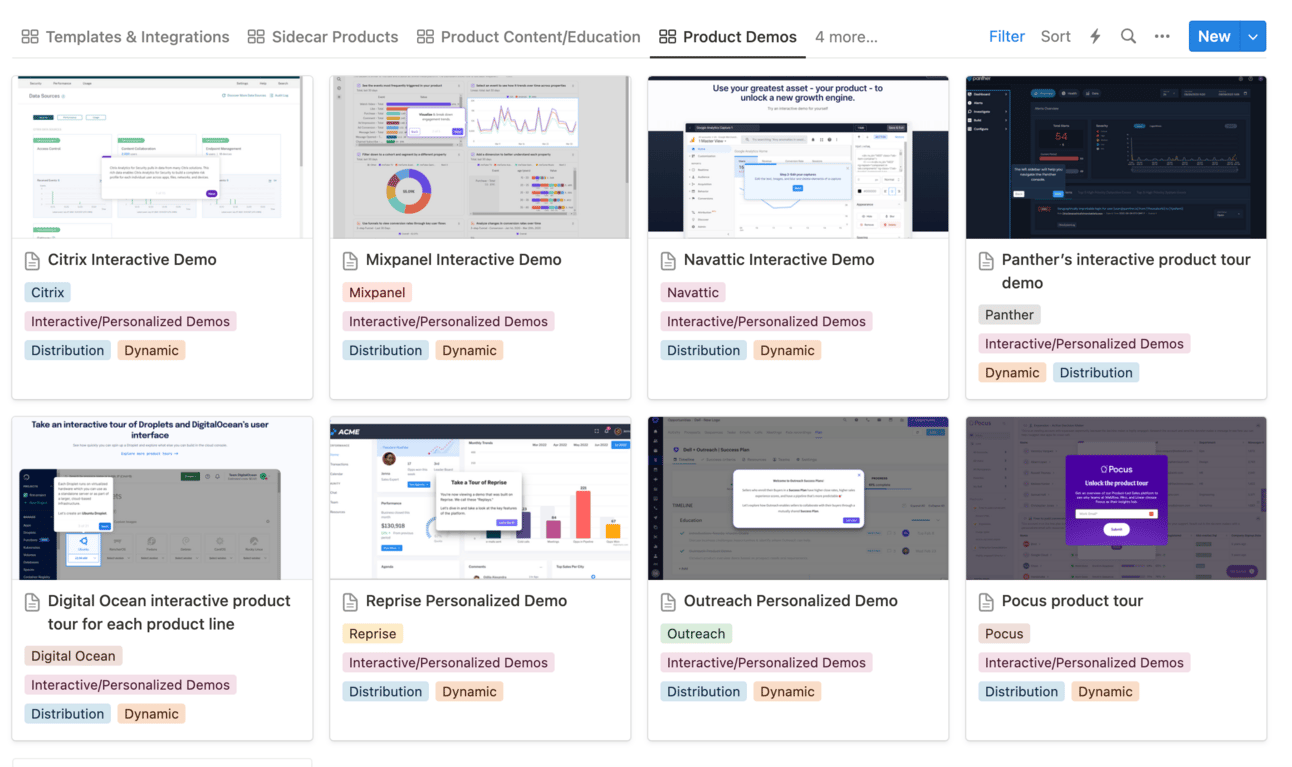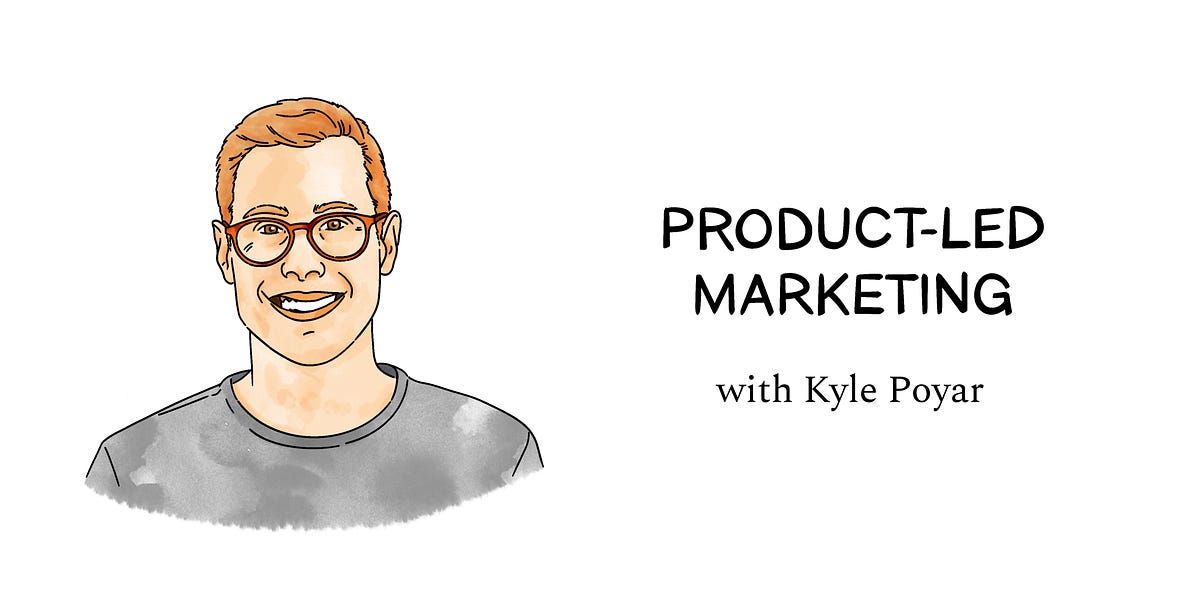Hey everyone!
For this month’s TheProductLed edition, I am excited to share 🥳
A breakdown on why Product-led Marketing (PLM) requires a rapid change in mindset. Adopt or drown 💹
The PLG Recap MVPs from last month 🥇
Let’s get into it!!
By the end of this post, I hope to convince you that: Leveraging product demos on your website is a leading demand capture tactic that helps generate more leads and lower the CAC for your business.
Product-Led Marketing (PLM) is a marketing strategy that leverages the product itself, or parts of the product, to reach potential users by way of moving up the product funnel.
Product-led marketing (PLM) is a modern approach focusing on leveraging the product as the main marketing growth driver.
It's built on four key themes: SEO, Distribution, Dynamic, and Regenerative.
Some of the most common PLM tactics are:
Templates
Product Demos (interactive/personal)
Ungating the product
Product education & content
Sidecar products
Integration marketplaces
To read more about tactics and themes, chack out my previous PLM deep-dive guide in case you missed it 👇
Let’s start with traditional marketing strategies
Traditional marketing often falls into the 80/20 performance marketing trap, heavily relying on paid advertising. This not only requires a significant budget but also takes time to scale, and develop feedback loops, plus assuming the foundation for measuring impact is sound → this typically takes around six months.
Moreover, each advertising channel—be it LinkedIn, Twitter, Google, or Meta—has its own set of rules, audience demographics, and creative requirements, further extending the time to test, learn, and optimize campaigns. This singular focus on performance marketing often leads to high Costs of Acquisition (CAC) and a saturated market, urging the need for a more balanced and creative marketing approach like PLM.
Read about high CAC and how PLM is the answer 👇
It’s time to change the mindset
PLM's innovative mindset emerges from a holistic approach, bringing the product closer to the end user. Unlike traditional marketing which often takes content outside the website to explain the 'why’ - PLM instead takes this narrative within the product experience on the website itself to explain the ‘how.’ It's about showing rather than just telling and creating a more interactive, user-centric marketing model.
This not only bridges the gap between the product and the user earlier in the user journey but also fosters a more authentic and engaging user experience.
Breaking down Demand Generation vs. Demand Capture
All marketing tactics (whether brand, growth, performance, etc.) fall under two main categories: Demand Generation and Capture.
Traditional marketing tactics are heavily weighted on demand generation. You spin up some ads on various channel platforms, spend a ton of money on getting “quality” traffic to your website, and then spend a lot of time trying to figure out whether this traffic is converting. Is it the landing page? Is it the channel? It’s probably the specific audience we are testing on that channel. Okay, do you get the point?
Don’t get me wrong, scaling a performance marketing engine is key, but only if there are strong channel-market and channel-product fits AND you have the necessary resources to invest. I have managed and scaled $10M in paid search over the years - it definitely works! But this is not the only strategy that exists.
Demand generation isn’t just one source. It’s a collection of many marketing efforts across growth, product, brand, community, events, webinars, etc. But Demand Generation is only as good as the Demand you can Capture.
Demand Capture is the separate set of tactics and strategies geared towards converting these users. More often than not, 99% of marketers will think about this as landing page optimization (CRO).
But there is so much more to the piece of the pie than just the content. What is the content? Is it about features, capability, problems, solutions, pain points, etc? Well it depends on who is visiting the page. Ah, okay so back to demand gen - need to optimize that…
This is a siloed approach and causes challenges. Especially as marketing channels and attribution models continue is getting more and more saturated. I want to change this. I want to emphasize new and innovative ways to demolish these silos in marketing. Product-led marketing is the answer!
Focusing on demand capture is more critical. Why?
Let’s say there is a 60/40 split between the traffic we know why and don’t why is arriving on our website. If you pop into Google Analytics, you can attribute almost 95% of it, but if you can tell me why and where all the Direct and Brand SEO traffic is coming from - I will wait. But we do know - it’s your product speaking for itself. It’s viral network effects speaking for itself. It’s other word of mouth and referrals that you can’t track.
Okay, so in this example → We tend to over-optimize and lean into the 60% we do know where the traffic is coming from. We optimize the channel, the content, etc. all for the 60% from website visits all the way to conversion.
However, if you optimize the demand capture, you will optimize all the 100% of the traffic!! You will see a greater lift in conversion. Remember, you are building and marketing to your ICP. It starts with the product, then then the marketing site, and then the content of the website. So you may forego optimizing a specific channel in the short term, but you end up optimizing what your ICP needs first. The rest will follow.
Product-led Marketing is all about improving demand capture
Here is a thought experiment. Which one sounds better?
You can take content off your website and go take that content to market across various channels.
You can take your product off your app and go take the product to the marketing website.

PLM is the second one.
Product demos are one PLM tactic focused on improving Demand Capture.
Product demos are one of the leading PLM strategies taking the SaaS PLG world by storm. Here is a list of only a few companies that are using personal or interactive demos to drive acquisition:
Pocus
Ramp
ClickUp
Brex
Datadog
Twilio
Demandbase
Drift
Navattic
Mixpanel
Citrix
Panther
Digital Ocean
Outreach
Reprise
Two leading product demo companies Reprise and Navattic have case studies with incredible stats.
Product demos (interactive, personal, etc) are engaging experiences that are decoupled from the product and give potential prospects a feel for the product.
Pocus released an Interactive Demo PLG playbook that is fantastic. By using a playbook from Navattic, one customer:
Saw a 450% increase in free trial signups, 100% increase in activated free trials, and 175% increase in free trial to paid conversions.
I spoke to a few sales reps in my circle. Two of them told me that the product demo that is literally requested in the form fill is not given to the prospect until the 3rd or 4th call. What!? That’s insane. Why wait so long?
But this is due to really ensuring the lead is qualified. I get it.
In a traditional sales-led approach, you have a campaign and generate traffic to a page, the page "talks about why this product will solve your problem" but PLM shows "how this product will solve your problem" and then we expect the user to be ready to request a demo. This rarely ever happens right away. It requires a dozen of touchpoints that you can't measure.
However, why put the burden on the marketing channel to have a ton of touch points when you can bring "up" the product? (as in making the product responsible for helping too).
My colleague Natalie Marcotullio from Nattatic has one of the best ABM strategies I’ve seen (using Interactive Demos):
By showcasing part of the product earlier (aka product demo), before the prospect books a demo call, you lubricate the conversation with expectation and excitement because you’ve delivered value! This also weeds out anyone who did not like the product (product-led verification is cheaper than sales-led verification 🤔 - just FYI)
Think about it. You can continuously bring down the "user" to the website over and over again (that's expensive) or you can bring "up the product" which is free (see Miro diagram above).
Product demos are a lubricant for booking more sales calls and therefore, capture demand more effectively.
This is ESPECIALLY true when you have a freemium motion. The moment you open up a free version of your product, the majority of your buyers will still check out the product for free - why? Because they can. Why rely only on a sales rep? Therefore, if you know this is true and happening without your control, then lean into it. Optimize it. Make it work!
PLM is one of the best marketing strategies to deliver value earlier in the journey to the end-user or potential buyer! 🔑
Check out my PLM database with 65+ examples👇
PLG Recap Highlights for September 🎉
💡 Click on the ones you like and bookmark them on LinkedIn! 💡
Acquisition
Pierre-Jean Hillion - What do Spotify, Strava, and Dropbox have in common?
Samantha Leal - Two simple rules to doubling your landing page conversion rate
Retention
Andrew Capland - The key to a good product led Onboarding recipe
Yaakov Carno - Users don’t care about your product. They care about…
Monetization
Kyle Poyar - Your guide to SaaS Pricing in 2023
Vlad Oleksiienko - 10 SaaS pricing ideas to get inspired
General Growth:
Ido Wiesenberg - 22 Growth Strategies from Leaders in PLG
Thanks for taking the time to stop by today!
Was this forwarded to you? Subscribe with one click.
If you're finding this newsletter valuable, please share and spread the word if you can!
See you next time 👋






